It’s all invented. You know that, right? Everything. Just made up stories that we inherit and pass down that construct our world. Among the most obvious hocus pocus human constructions is the idea of money, and an economy. As a quick refresher, and just so we’re all on the same page…
The existence of “waste” flies directly in the face of definition #2. We have much to learn from Indigenous People, the original stewards of this land, like resourcefulness and the inherent interconnected nature of life. The idea of a “circular economy” most simply put is an attempt to take our current economic model that is linear, and bend the line to be more, well, circular and cyclical.
My Quaker faith centers questions as a way to create clarity and deepen discernment. While it can feel increasingly like we’re in an age of decline with many systems degrading right before our very eyes, I think it’s so important to, as a Friend once put it:
“Remember to imagine.”
What if we built an economy that instead of extraction, exploitation, and scarcity at the core, we ensure that justice and abundance are integrally woven in?
What if we created an economy where care for all living life was central?
What if we created an economy where every “waste stream” or “invasive species” was immediately re-framed to abundant “supply chain” or “thriving life”?
What if the goal of the economy was to ensure that everyone’s basic needs are met, so that our species can evolve and never-before-seen human creativity and actualization can be unleashed?
What if we all realized the emperor has no clothes? And that emperor is the invention of money, and that it’s no longer working for the mass majority of us? What then could we replace it with?
What is the intention of our species? That’s Bill’s question actually (see below).
While this topic is big and broad and daunting, I’m truly committed to asking these kind of big audacious questions, and seek answers, even if they only turn up more questions.
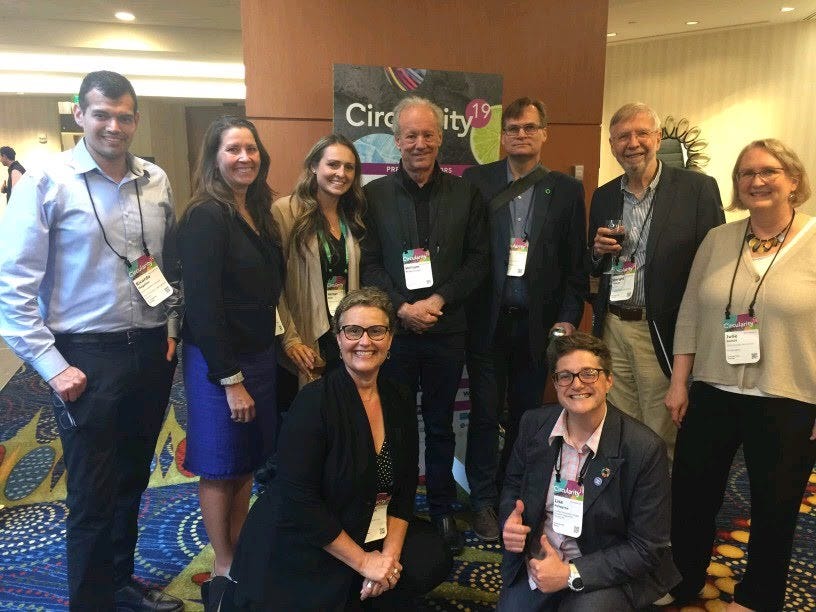
Back in 2019 I attended my first Circularity Conference. Apparently it was the first one GreenBiz hosted, in the great city of Minneapolis. So to return to the conference after a number of years and career developments, was like a reunion of sorts. This year’s conference was held in Chicago, and what a delight to be in a new city and see so many familiar faces. It was an incredibly enriching experience, and for the sake of reinforcing my own professional development, I’m going to share my favorite insights and key takeaways from the conference.
Day One - Lost in Translation
Did you catch it? “No Littering. Violators will be fine.” A Freudian slip? Or mirror for our current state where industrial polluters are rarely held accountable, or paying the fine is just now considered the cost of doing business? Hey hey, ho ho, acronyms and jargon have got to go! Mixed messages pervade, and the world of “circularity”, which is a term many are unfamiliar with, can lose some people in translation. It’s like “stewardship” keeps getting rebranded:
environmentalism → sustainability → circular economy
Learning to speak the language that’s most relevant to the specific stakeholder is essential. One of the best examples of this was given during a session titled “It’s Time to Tackle Food Waste”, where Justin Lacroix from Ahold Delhaize made the translation that supermarkets are always “managing shrink”. This is a term that any food retailer is very familiar with, but if you’re not a grocer or work for a supermarket you’ve likely never heard of it before. Ask a grocer what “circularity” means and you’re likely to get a shrug. Reducing wasted food for grocers entails approaches that can seem myopic or esoteric like “sourcing”, better “cold chain” management, or the more commonly known strategy of markdown programs for short dated products, aka the beloved “Manager’s Special”.
In my years studying all of this I’ve come across fancy terms mostly used in the world of academia that also try to get at this concept of a circular economy, like “industrial ecology” and “byproduct synergy”. Some of the best industrialists have always looked at waste streams as supply chains. Byproduct synergy is actually one of the reasons we have petrochemicals and plastics! From this TED-Ed video:
“In 1907 a chemist combined phenol - a waste product of coal tar - and formaldehyde, creating a hardy new polymer called Bakelite.”
We do have some elegant solution frameworks at our disposal (ba dum bum psh!) to address the multitude of broken systems bakedlite into our linear economy (I’m on a roll!). This is why I’ve long been a big fan of systems thinking, and finding the leverage points in a system to go upstream and address problems at their root. Along with systems thinking is systems design, and if you really think about it…
So another takeaway was actually a reminder to myself about the conversation that really needs to be happening, which is having product and packaging designers talk with recyclers and composters so that they can redesign and optimize for reuse, recycling, and composting. Because quite frankly, as the Zero Waste Commission of the City of Berkeley put it, with a young woman in 2007 challenging Pete Seeger to put it into a song:
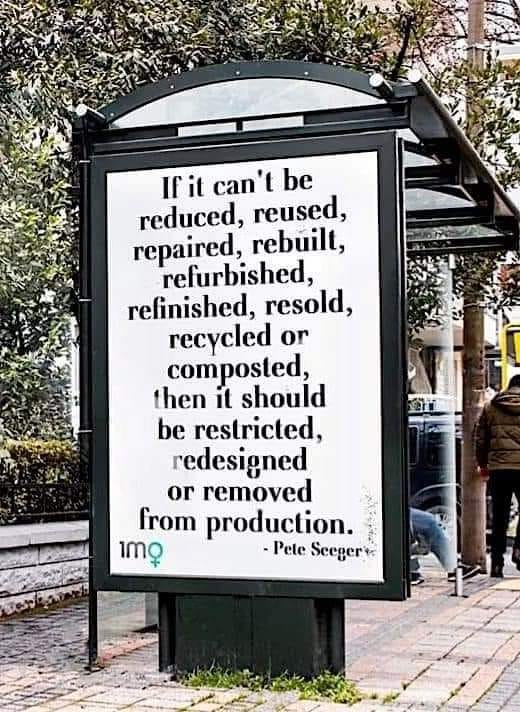
Day Two - Upcycling is having a moment…
The EPA just updated their Food Recovery Hierarchy which was released back in the 1990s, and has been an invaluable reference point for those of us working to reduce and eliminate wasted food. So we’ve now gone from this:
To this elegant new “U”, now called the “Wasted Food Scale”.
There are numerous revisions here, but most notably it’s worth highlighting that “compost” and “anaerobic digestion” are now on equal footing, depending on the feedstock and what’s most readily available regarding local infrastructure. Congrats compost, way to level up!
I had a “Eureka moment” at Circularity during a session titled “Innovative Strategies for Circular Food Systems”. Some are calling the new shape of the Wasted Food Scale a “horseshoe” or “swoosh” (just don’t do it), but I love thinking of it as a “U” for “upcycling” which is a brand new addition not referenced in the old food recovery hierarchy. Also, for the Wasted Food Scale to work, it needs U! Maybe we upcycle Uncle Sam into Aunt Alex and get the USDA and EPA to collaborate on posters too?

I’ve long been a fan of upcycling, which is when you take the item, material, or in this case food ingredient that would traditionally get discarded, and repurpose it. This was my business school project, and I spent a couple years attempting to start a sustainable business from scratch with PestoGrino. All insights and gleanings are in this early Substack post I wrote back in May of 2022, called “PestoGrino Recap”. Point is, it’s arguably the most exciting and fun intervention of the wasted food solutions because it requires innovation and imagination. It conjures creativity, and elicits us to consider what other (delicious) applications can be created?
Solving for the problem of wasted food will never be singular, or as many of us sustainability evangelists now like to say “there’s no silver bullet”. Wasted food is not a werewolf, and if it were, we’d still need to apply a different set of solutions depending on whether we’re talking about wasted food solutions at home- or in businesses, industry, and institutions.
In that same session on “Innovative Strategies for Circular Food Systems” that was expertly moderated by Jackie Suggitt from ReFED, I got to remind the room that compost is the OG of the circular economy, and then asked a question based on the emerging discipline of biomimicry-
“What can we learn from how Nature cycles nutrients?”
Dr. Lara Ramdin from the Upcycle Food Association reminded us that one of the ways this happens in the natural world is through fermentation. Brills. Truly. We have so much to learn from how Mother Nature filters water, harnesses sunlight, and on and on.
It’s a little known fact that each arrow in the iconic “chasing arrows” recycling symbol is meant to represent a step in the recycling loop. After the first step of collection and then the second step of processing, the final step of purchasing is arguably the most important. If no one’s purchasing products with recycled content, then there is no viable market, and the system doesn’t work.
Jason Feldman of Green Era Sustainability gave good insight into my question regarding market development to spur demand for “digestate”, the material remaining after the anaerobic digestion of a biodegradable feedstock. Jason drew connections between food & fertilizer security as issues of national security, since global supply chains continue to be disrupted and the U.S. is fertilizer import dependent. Jason also made a great point about how the recycling of food scraps and the production of compost and soil amendments like digestate, have the unique ability to connect rural communities with urban communities, and in today’s increasingly toxic political environment, this type of bridge building can be revelatory.
We can’t just keep taking nutrients out of the soil. And one of the things that inspires me most about working in waste reduction is that each of us at numerous points in the day, can decide what to do with our discards. That choice is literally in our hands.
Someone asked about how to address wasted food in the household, given that it accounts for such a large portion of the “municipal solid waste stream” or what gets sent to landfill. Bless the heart of every human working on this, it is much needed. The EPA did create a whole toolkit designed to assist individuals and households to implement strategies to reduce wasted food in their homes, called Food: Too Good to Waste Implementation Guide and Toolkit. I still use the “smart shopping” strategy of shopping my fridge and pantry first to see what needs to get eaten, and then doing my meal planning around those ingredients, and then only buying the missing ingredients needed to make those meals. Fun stuff!
Feedback Loops
If you work in waste reduction consulting (which, I’m sure you don’t but, hey…), then you know that anything facing the public or “front-of-house” will be plagued by contamination. This is one of the reasons I strongly prefer working at the commercial and industrial scale, rather than household individual level. It’s not an either/or though! It’s a both/and regarding what’s needed. Top-down corporate change, or consumer-level behavior change? It’s a false dichotomy because change is needed at every level. So go wherever you’re called, it’s all good work.
One little anecdote that stuck with me from the conference was having an after session discussion with a couple fellow attendees, and we started talking about differences in other countries regarding recycling collection and haulers. The woman shared that she had a friend that used to live in Germany, and one time his hauler came to pick up his recycling and saw that it was all mixed together and contaminated. So what did he do? He dumped it all over his front lawn for him and his neighbors to see, and told him that we’ll come back to pick it up when it’s properly sorted. Talk about a critical feedback loop. Christchurch, New Zealand has attempted a similar, more city-wide public shaming and celebrating campaign by putting gold stars on the bins of the best recyclers, and confiscating the recycling bins of the repeat offenders.
Other interesting takeaways from day two of the Circularity Conference was noticing a continued trend of startups designing packaging from nature-based materials like mushrooms (Mycocycle) and seaweed (Sway) with a focus on packaging design that’s “optimized for compostability”. We also got a sneak peek from Marta Fiscina into an initiative from the Ocean Plastics Leadership Network, that’ll be launching “CircleView”, a “public plastics & carbon company profiling platform powered by alternative data and anonymous reviews from employees and NGOs.” Inspired by Glassdoor, CircleView will monitor pledges and commitments of 1000s of companies, open to peer review, and leveraging publicly available data.
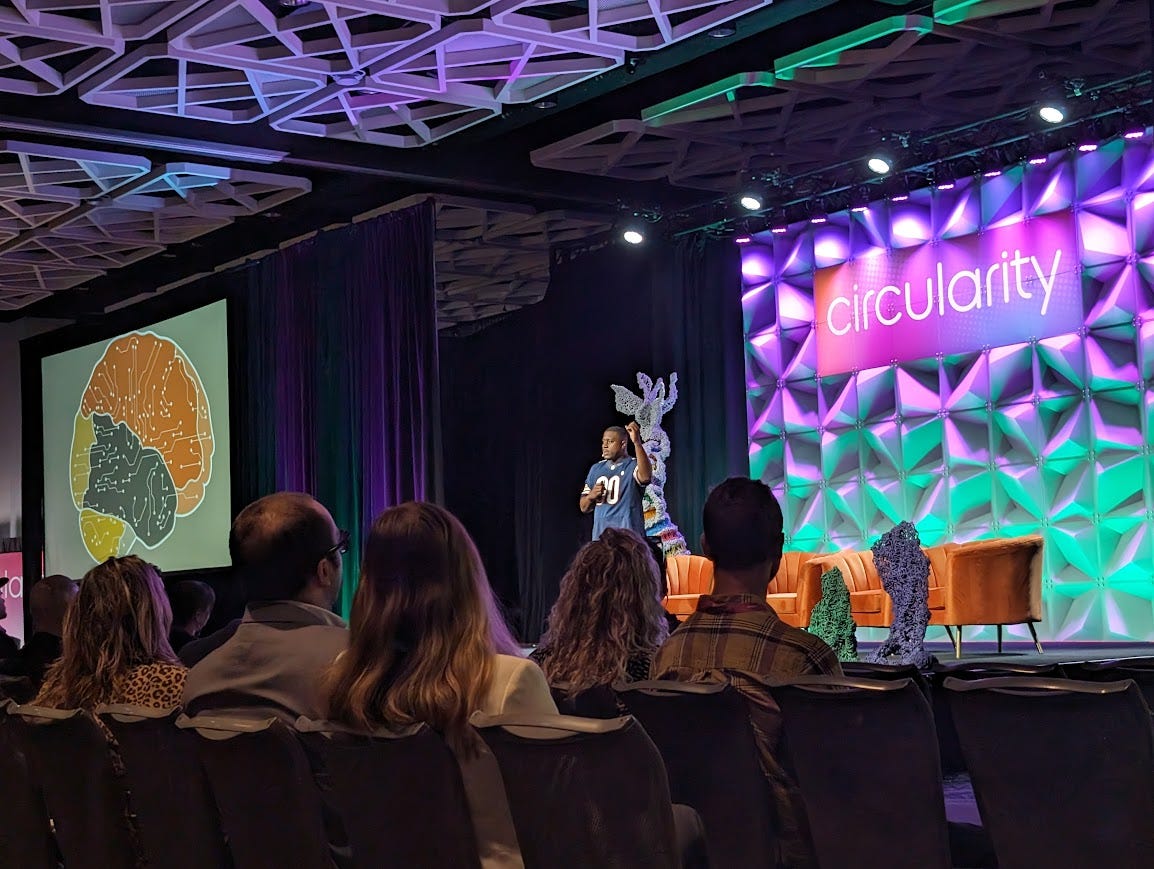
No conference would be complete without its pep rally moment, authentically delivered by dynamic speakers like Naomi Davis from Blacks in Green, Rheaply’s Founder and Chicago’s own Gary Cooper, RePurpose Global’s Co-Founder & CEO Svanika Balasubramanian, and technical ice climber and former White House advisor for President Obama, Molly Kawahata. Molly reminded us that “…fear, guilt, and shame are antithetical to human action”. She effervescently and effortlessly shared how she’s been on a mission to figure out how do we leverage psychology and neuroscience to get people to be on board with climate. Where ‘analysis paralysis’ has pervaded, the essence of her message is about instilling agency and empowerment into the climate justice movement, while also destigmatizing mental health. She’s so fab Patagonia made a film about her, here’s the trailer…
The session on “How to be an Environmental Justice Champion” was an important one for my own forever-journey of learning how to be an ally while avoiding the ‘white savior complex’. Terms like “sacrifice zones” and “Cancer Alley” were mentioned. Andy Rose from Perpetual talked about the importance of offering proper compensation when engaging any lower income or disadvantaged community as part of stakeholder engagement efforts. Reminders to check entitlement, do our own research, be curious, and listen first, were all reinforced. I especially appreciated the insight from Jamaica Gayle, Director of Sustainability & Environmental Affairs for the Plant Based Products Council, about the importance of “identifying the risks of doing nothing.”
One question I was left with was the conflicting ethics by having one of the largest chemical companies (read: polluter) on the planet, Dow, be one of the conference sponsors. While I completely understand the need for financial sustainability for a conference like this to be held, I wonder-
How can it best be determined what level of partnering vs. holding accountable, is appropriate? Or is needed, given the state of things?
How can nonprofits have the hard, but necessary conversations with our funders and donors?
Day Three - Meeting People Where They Are
Learning to speak the language that’s most relevant and relatable to the specific intended stakeholder is essential. Death Cab for Cutie has a great song that encapsulates bits from the first and last day of the conference, “Different Names for the Same Thing”. Whether it was Molly Kawahata talking about connecting climate action and circularity to public health, or Amanda Jordan with the City of Phoenix talking about how they tied their efforts into economic development, or Historic Preservation Officer Shanon Miller explaining the details of San Antonio’s building deconstruction policy framework which is considered to be one of the best in the country, or Madelyn Morgan sharing how Austin, TX has incorporated sustainability and circularity into workforce development through the recent launch of their Green Workforce Accelerator, it was clear-
“We’ve got to speak to, and meet people where they are.” - Shanon Miller
We seem to be just starting to scratch the surface in regards to leveraging technology to connect with each other and to build more localized, resilient supply chains. I don’t know who originally said this, or if it even originated at the conference but perhaps one of the pithiest takeaways, comes in this little nugget of guidance that can help filter out real solutions from false ones:
“If it’s not local, it’s not circular.”





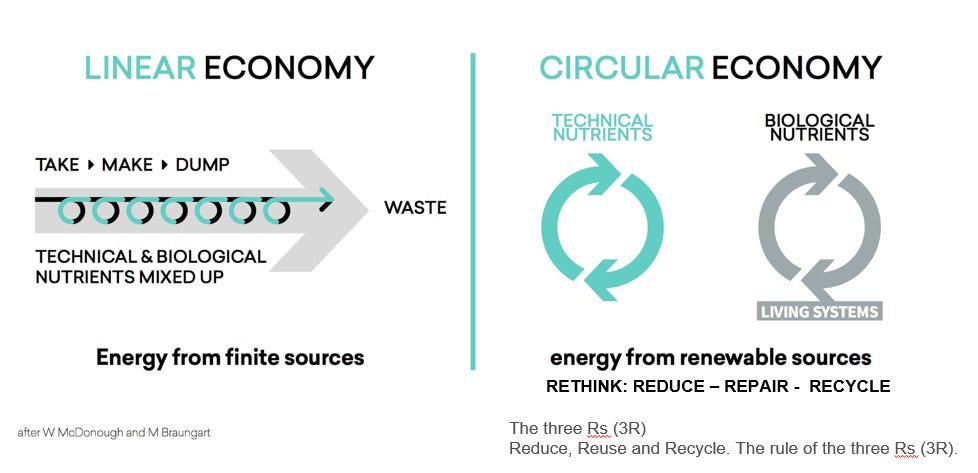


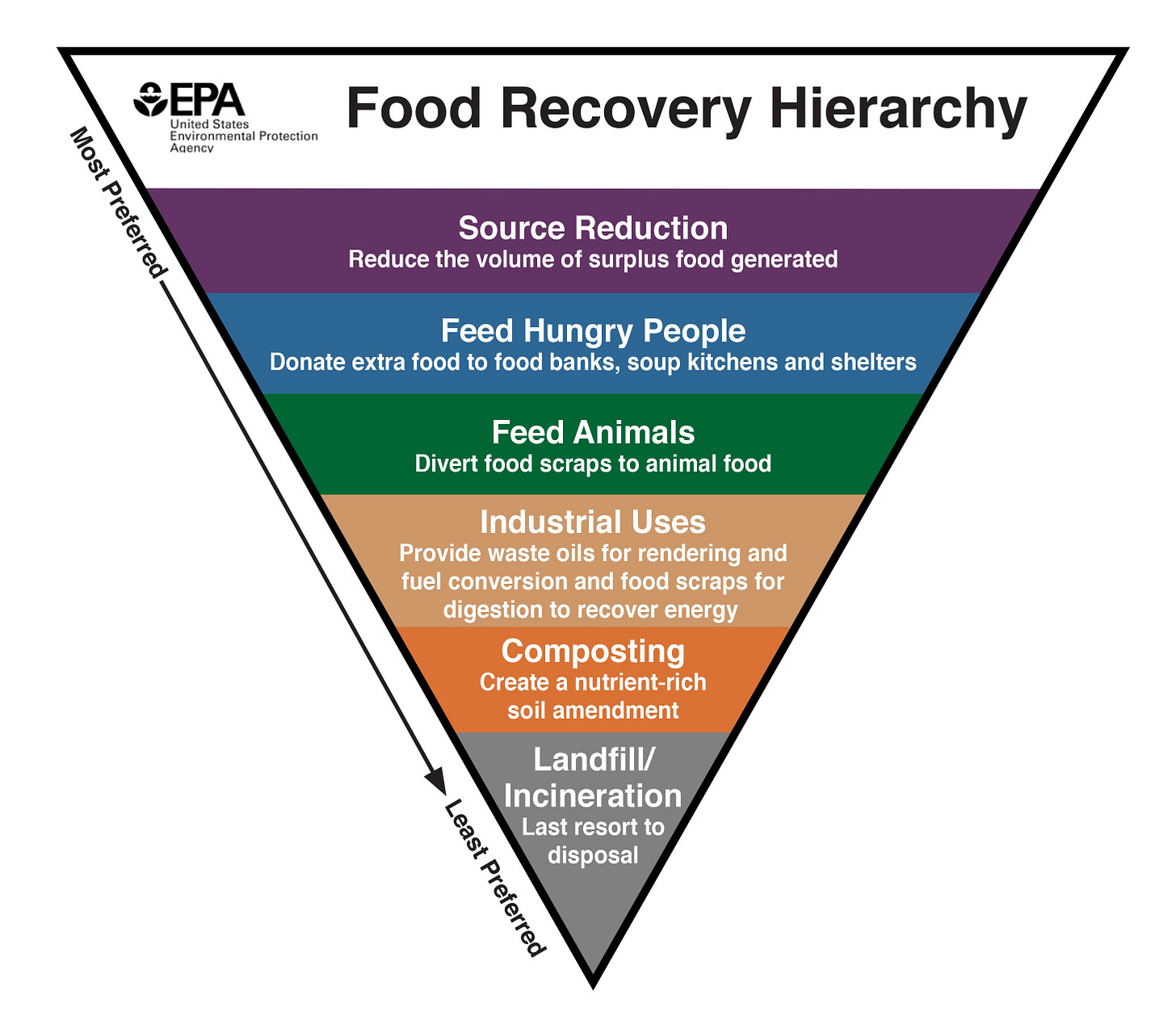
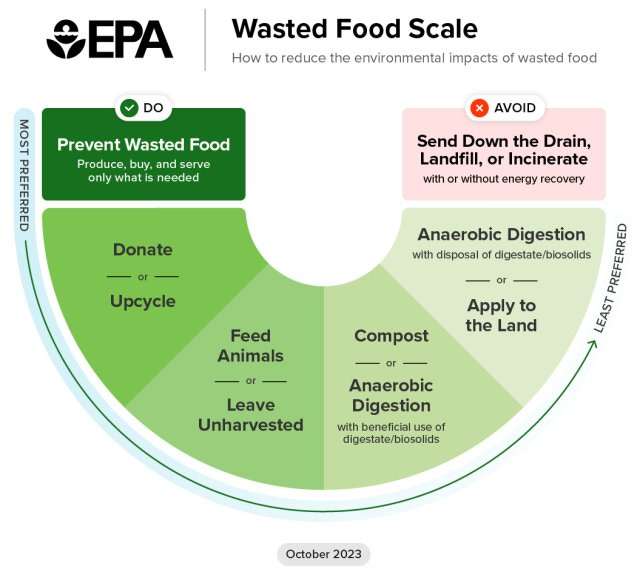
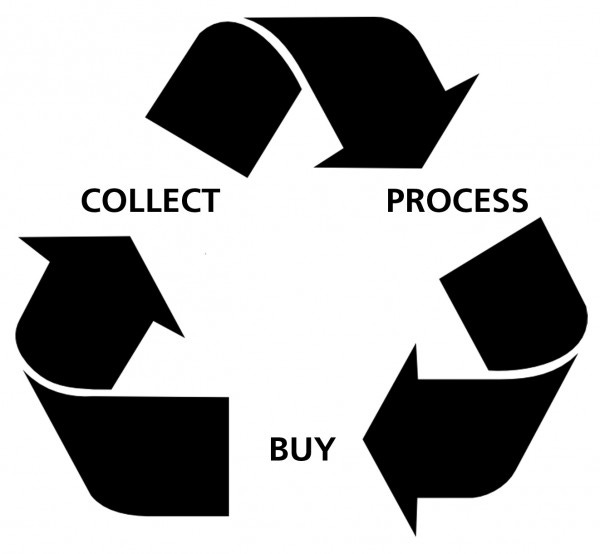
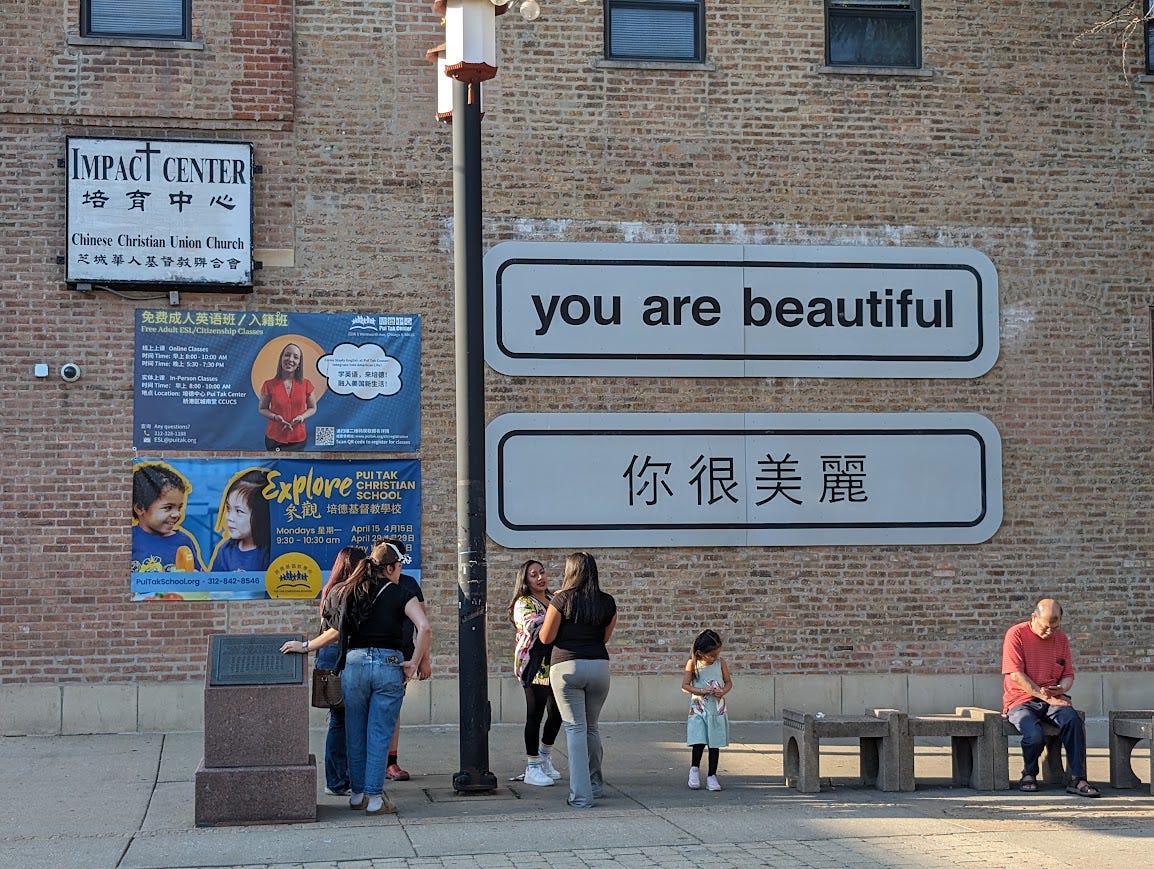
Thank you!